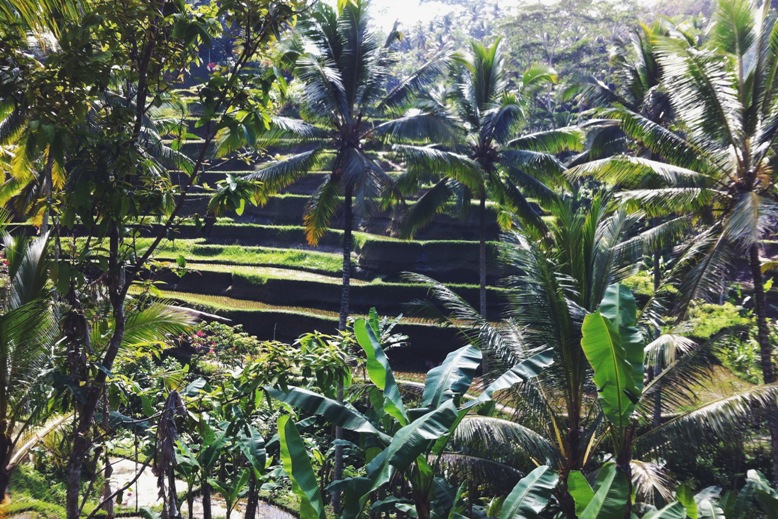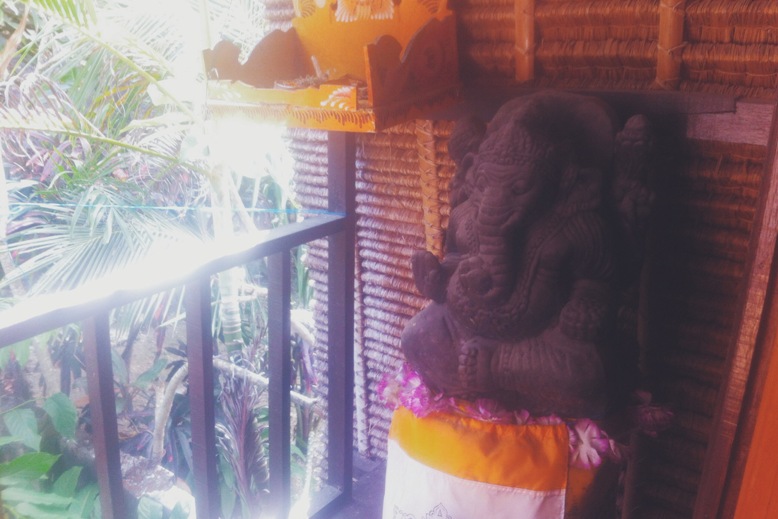“Travel has a way of stretching the mind. The stretch comes not from travel’s immediate rewards, the inevitable myriad new sights, smells and sounds, but with experiencing firsthand how others do differently what we believed to be the right and only way.” ~ Ralph Crawshaw
Bali, the Island of Gods, is one of the most popular Indonesian islands.
Ever since I first came to the island I’ve been fascinated by its people, colours, culture, rituals and all the things that were so different form where I come from. It was intriguing and beautiful.
The first time I visited the island it was a very touristy trip—we went and visited the Lonely Planet recommendations, enjoyed the nice beaches and went to all the party places.
But this time around, I wanted my trip to be different, I wanted to know more about this amazing culture, I wanted to know why they do things as they do them. I wanted my trip to be less superficial.
Here are just a few of the most interesting facts about this beautiful Hindu island:
1. Sekala/Niskala
There are two different sides to everything you see in Bali, the tangible and the intangible of Balinese religion, art and rituals. The tangible side—things that we see—such as colourful rituals, dancing and ceremonies—is called sekala.
There is also the intangible side to all these happenings. The doctrine that explains them all, the magic and what is felt within—that’s called niskala.
2. Organization in threes
In our Western world things are generally classified in terms of dualities: black or white, good or evil, positive or negative.
In Bali, they see things a bit differently—things are not just good or bad but there is the third part to the equation—a ‘centre’ that balances out the two extremes. This is something that Indonesians keep in mind at all times—in rituals, offerings and everyday life.
3. Geographical directions
We in the west are used to the four geographical directions: north, south, east and west.
But geographical (and spiritual) orientation on the island is not determined by the common four directions. They have eight compass directions which consist of four basic points: kaja, kangin, kelod and kauh.
Everything begins and is orientated based on the Balinese sacred mountain Gunung Agun which is the “home” of Hindu gods. Everything that is towards the holy mountain and everything that is up towards the sky is kaja (the sacred direction toward god) and everything that is the opposite of that, less sacred, towards the sea, towards lower elevations is kelod. The second most sacred direction is kangin—the direction from which the sun rises (sun is manifestation of god) and the opposite of it is kauh, the west.
Everything is based on these compass directions and you can see it in their everyday life—villages are orientated kaja-kelod (the temples are in kaja end of the village, the cemetery at the kelod end) and so are the households (the head of the household lives in the most kaja building in the household and everyone sleeps with their heads towards less sacred orientation).
4. Rites of passages
Rites of passages in Bali are not celebrations of achievements but have deep religious purpose—they mark the passage from a young, innocent child to a duty-bound adult. They usually coincide with some physical events like birth, puberty, marriage and are there to prove individuals with appropriate spiritual energy (kesaktian) to live correctly and successfully.
There are 13 different ritual ceremonies in Bali, starting 6 months after a baby’s conception and ending with the marriage ceremony.
The most important and elaborate rites of passages are at child’s first birthday (oton) when they name the baby, tooth filing (mapandes) to symbolically get rid of persons coarse animal-like attributes and marriage (pawiwahan). In some cases the rituals are postponed until another family member requires the same ceremony and they can be combined and therefore create a larger celebration.
5. Offerings
Everywhere you go in Bali you see colourful offerings full of flowers, food and incense at every door and at every entrance, sometimes even on the dashboards of cars.
An offering is supposed to be a kind of self-sacrifice: people spend time and money making the offering and basically put a part of themselves into it. The placement of the offering is always accompanied by a simple gesture (ngayab) of waving the right hand with an incense three times.
Offerings made to the higher aspects of god (betara-betari) must be beautiful and nicely made but the ones for the demons can be simpler—the demons are greedy and will take pretty much anything. Offerings for the betara-betari are always presented on a platform, above the ground and the ones for the demons are placed on the ground.
6. Holy water
Holy water in Bali contains mysterious force and can cleanse spiritual impurities and protect from evil spirits. It accompanies every Hindu-Balinese ceremony and worship and the power and the usage of the holy water depends on the fact who made it and its source.
Holy water has to be handled very respectfully—it can only be held and passed around with your right hand and the container of water should be held as high as possible, possibly higher than other people’s heads.
7. The Supernatural
In Balinese culture there is no real distinction between the secular and the religious so the supernatural is often a part of everyday life and beliefs. As a visitor of Bali you probably won’t hear much about ‘black magic’ but it does exist. There are so many things that are charged with special power in Bali—from directions, colour, numbers to words, syllables, temples and places. The locals are not paranoid about these things however they are conscious of them all the time.
When I travel to the other side of the world, far away from the culture I know and not knowing nothing about the one I’m visiting, I can’t help but feel a bit alone and disconnected from the environment and the people that surround me. That way I can experience what I see but I don’t really understand it—which gives me a feeling of uneasiness.
Reading about Balinese culture made me understand why and how things happen and it brought me a tiny bit closer to them. Now when I’m walking down the street seeing a bunch of women making baskets, I know they must be making them for the big offerings for a ceremony and that in couple of days they’ll probably be celebrating a marriage.
I also avoid stepping or walking over offerings as a sign of respect (and of course to not upset the demons) and every time I pass a village I notice that everything really is orientated kaja-kelod. All of these little things brought me a bit closer to the culture, to the people and it is a great feeling when you can actually feel and almost understand rather than just being someone who comes and leaves the place, unaffected.
Understanding the rituals and beliefs of another culture stretches our minds. It helps us to understand that another’s reality is as real as ours.
Opening our minds and our hearts will bring us closer to other people. In this way, travelling becomes more than just sightseeing…and isn’t that what travel is all about?
*
Reference:
Fred B. Eiseman, Jr. called BALI: Sekala & Niskala (Tuttle publishing, 1990)
Love elephant and want to go steady?
Sign up for our (curated) daily and weekly newsletters!
Editor: Renée Picard
Photos: author’s own
 Share on bsky
Share on bsky



Read 2 comments and reply